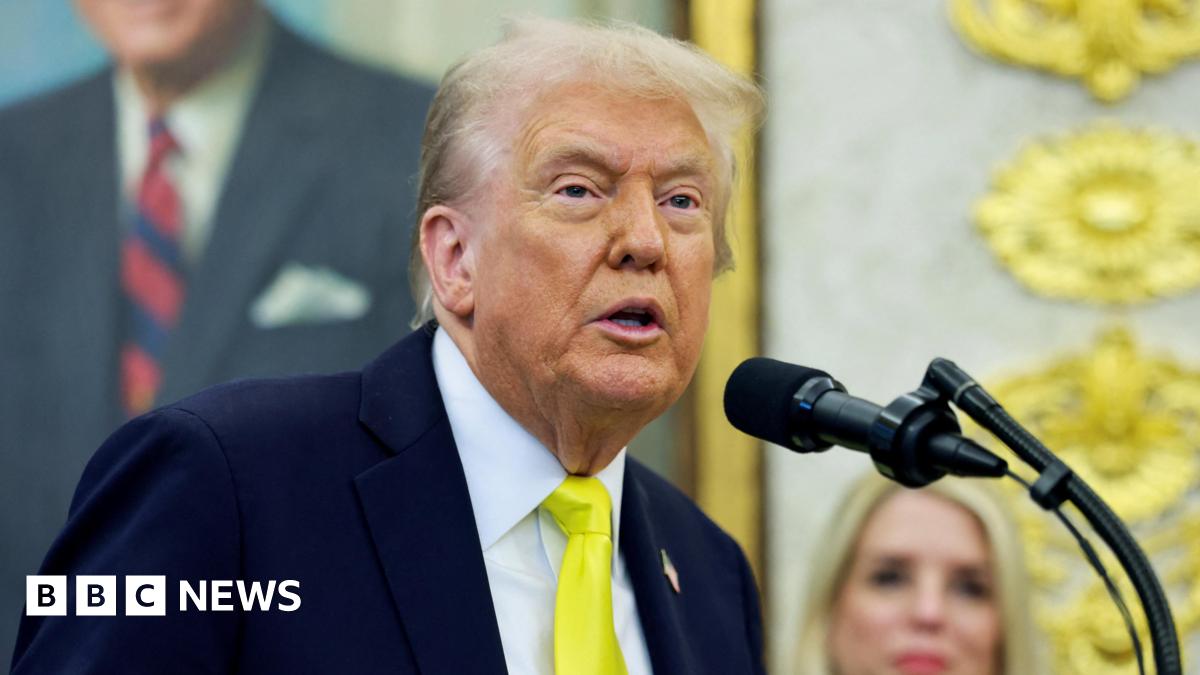“He asked for a meeting, and I’ll end up having a meeting before the end of the year most likely, if we make a deal. If we don’t make a deal, I’m not going to have a meeting,” Trump told CNBC in an interview referring to China’s Xi.
“We’re getting very close to a deal.
We’re getting along with China very well.”
The US President that declining energy prices in Russia could pressure President Vladimir Putin to halt the war in Ukraine. “If energy goes down enough, Putin is going to stop killing people. If you get energy down, another $10 a barrel, he’s going to have no choice because his economy stinks.”
During the interview, the US President said that tariffs on semiconductor and pharmaceutical imports would be announced “within the next week or so,” as the administration prepares to target key economic sectors in its effort to remake global trade. “We’ll be putting a initially small tariff on pharmaceuticals, but in one year-one and a half years, maximum-it’s going to go to 150% and then it’s going to go to 250% because we want pharmaceuticals made in our country,” Trump said. Duties on Chips Soon
“We’re going to be announcing on semiconductors and chips, which is a separate category,” the President continued.
The Commerce Department has been investigating the semiconductor market since April to set the stage for possible tariffs on an industry that’s expected to generate nearly $700 billion in global sales. Under Trump, the US has already imposed levies on imports of cars and auto parts as well as steel and aluminum.
Levies on imported chips threaten to sharply increase costs for large data centre operators including Microsoft, OpenAI, Meta Platforms, and Amazon.com that plan to spend billions of dollars on purchases of advanced semiconductors needed to propel their artificial intelligence businesses.
Trump has emphasised using tariffs to spur investments in domestic manufacturing including chip production, and on Tuesday he hailed Taiwan Semiconductor Manufacturing Company‘s plans to expand its US presence. “You know, we have the biggest in the world, as you know, from Taiwan is coming over and spending $300 billion in Arizona, building the biggest plant in the world for chips and semiconductors,” he said.
Trade Gap With China at 21-yr low
The US trade deficit narrowed in June on a sharp drop in consumer goods imports, and the trade gap with China shrank to its lowest in more than 21 years, the latest evidence of the imprint on global commerce Trump’s tariffs are making. The overall trade gap narrowed 16.0% in June to $60.2 billion, the Commerce Department’s Bureau of Economic Analysis said on Tuesday.
Days after reporting that the goods trade deficit tumbled 10.8% to its lowest since September 2023, the government said the full deficit including services also was its narrowest since then.
Exports of goods and services totaled $277.3 billion, down from more than $278 billion in May, while total imports were $337.5 billion, down from $350.3 billion.


